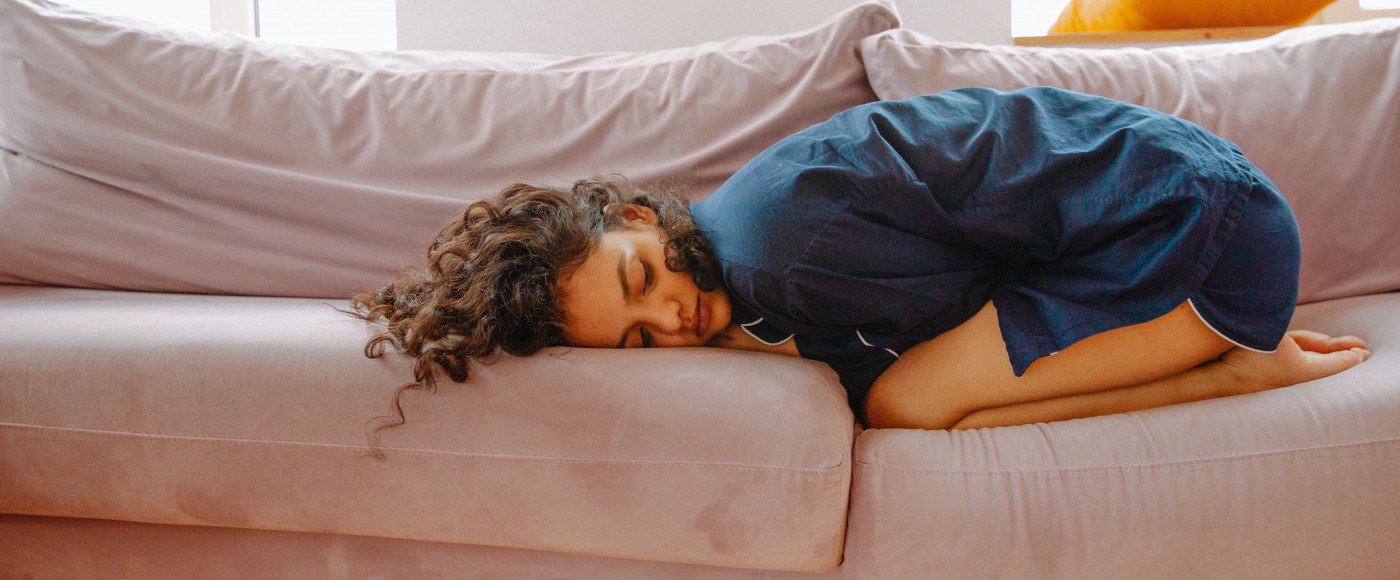Treatments for Dysmenorrhea
Presented by: Casey Carpenter and Maren Arabia
What is Dysmenorrhea?
Painful Menstruation
Risk Factors for Dysmenorrhea
- Early menarche (<12 years old)
- Nulliparity
- Heavy or prolonged menstrual flow
- Smoking
- Positive family history
- Obesity
- Fibroids
- Tubo-ovarian abscess
- Ovarian Torsion
- Endometriosis
Symptoms of Dysmenorrhea
- Cramping pain in the lower abdomen, often at the onset of menstruation
- Backache
- Body pain
- Headache
- Nausea
- Fatigue
- Fainting in severe cases
TCM Perspectives of Dysmenorrhea
- Liver Qi Constraint – affecting the reproductive organs, spleen, and stomach, and contributing to blood stasis, blood deficiency, and yin deficiency
- Blood stasis – causing pain by physically obstructing the movement of qi and blood
Alternative Treatment Options
Herb Treatment
4 Substance Decoction ( Si Wu Tang)
| Pharmaceutical Latin | Pin Yin | Dosage | Actions |
| Rx. Rehmanniae | Shu Di Huang | 4-21g | Strengthens the Liver and Kidneys and nourishes the Yin of the Blood. With Bai Shao, strongly nourishes Liver Blood. |
| Rx. Paeoniae Alba | Bai Shao | 4-15g | Nourishes Blood, preserves Yin, calms Liver Yang, and alleviates pain. With Dang Gui, nourishes Yin and Blood. With Dang Gui and Shu Di Huang, for dizziness, blurred vision, and dysmenorrhea due to Blood Deficiency or Blood Stasis. |
| Rx. Angelicae Sinensis | Dang Gui | 4-12g | Nourishes and invigorates the Blood, regulates Liver and Kidneys, regulates menses, and alleviates pain. With Shu Di Huang, Bai Shao, and Chuan Xiong, for menstrual irregularity, amenorrhea and dysmenorrhea due to Blood Deficiency or Stasis. |
| Rz. Chuanxiong | Chuan Xiong | 3-9g | Invigorates Blood, moves Qi, releases Stagnation, and alleviates pain. With Dang Gui, for Blood Deficiency causing menstrual problems including dysmenorrhea, scanty menses, and amenorrhea. |
Cranio-Sacral Therapy
It’s a type of bodywork that uses gentle pressure to relieve compression in the bones of the head, sacrum (a triangular bone in the lower back), and spinal column.
Yoga Poses
- Forward Pose
- Bound Angle Pose (Baddha Konasana)
- Reclined Bound Angle Pose (Supta Baddha Konasana)
- Child’s Pose (Balasana)
- Wide-Angle Seated Forward Bend (Upavistha Konasana)
- Reclining Twist (Bharadvaja)
- Modified Shoulder Stand/ Inverted Leg pose (Viparita Karani)
- Head to Knee Forward Bend (Janu Sirsasan)
Lifestyle Recommendations
- Heat Therapy
- High or Low-intensity exercise (running, cycling, yoga, stretching, Tai Qi, pilates)
- Acupressure
- Dietary changes
- Omega-3 fatty acids such as fish, calcium, vitamin D, food low in animal fats
- Avoid foods with high salt content and caffeine
- Drink more water and herbal teas such as chamomile
- Quit smoking
